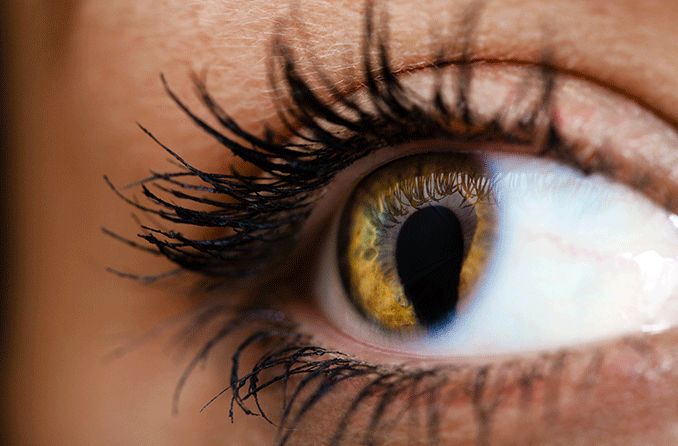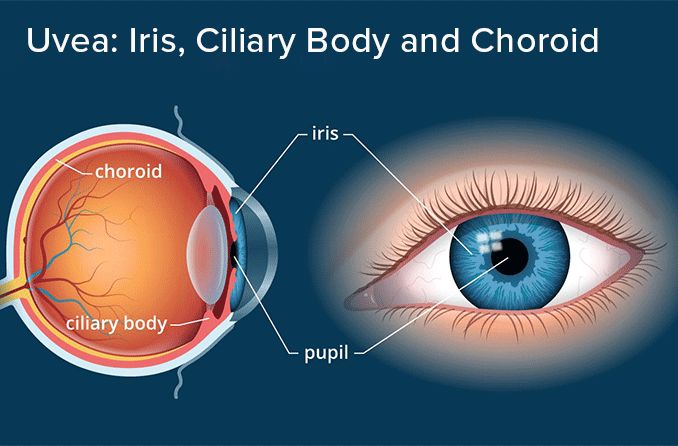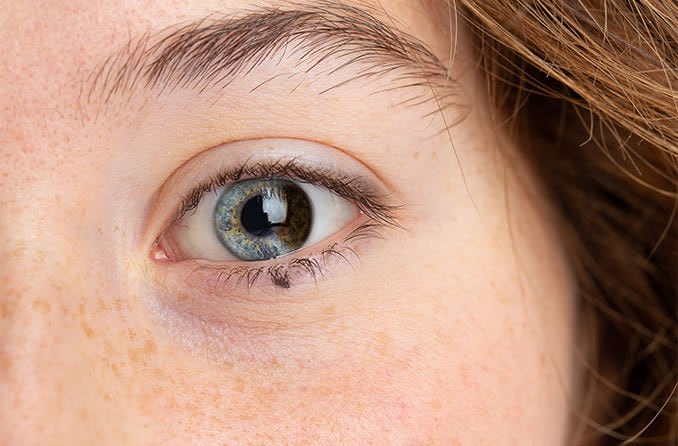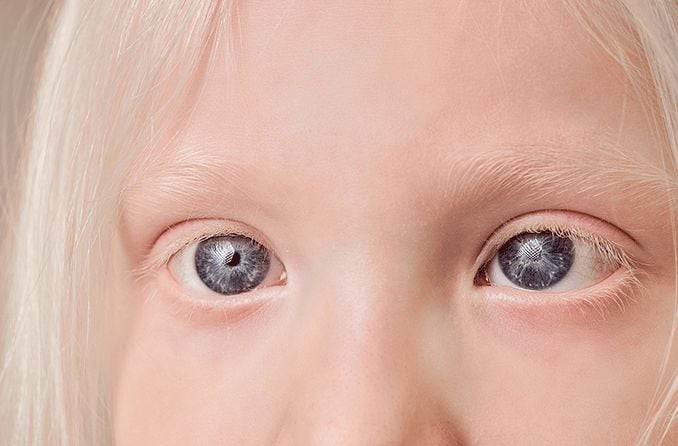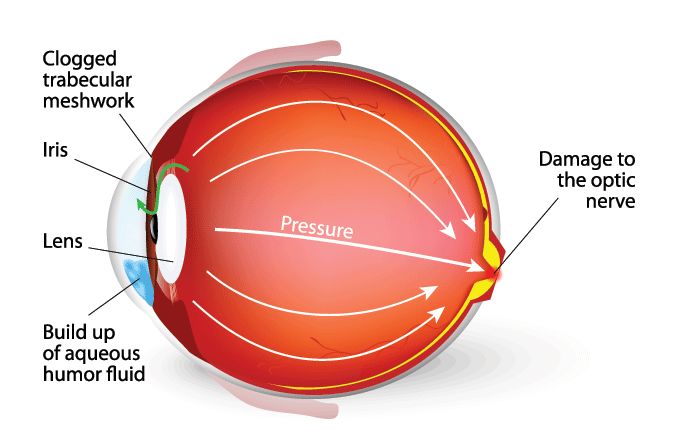Cat eye syndrome (CES) is a rare condition caused by a defect in a person’s chromosomes. The defect may result in deformities that appear in several areas of the body, including the eyes, ears, heart, skeletal system and more.
The name of the condition is inspired by a feature that is seen in approximately half of those affected with it: Coloboma of the iris, which makes the eye appear similar to that of a cat.
What is cat eye syndrome?
Cat eye syndrome, also known as Schmid-Fraccaro syndrome, is a condition caused by duplicated genetic information from chromosome 22. The occurrence of CES is rare, affecting 1 in every 50,000-150,000 people. Males and females are equally likely to be born with the condition.
Symptoms of CES are typically evident at birth. It’s possible for people with mild cases to experience minor or no symptoms of the condition. Cases that are more severe can present a variety of symptoms, some of which may be life threatening.
Causes
The cause of CES has to do with a defect in a person’s chromosomes.
Chromosomes are located in the nucleus of human cells and are responsible for carrying the genetic information a child gets from their parents. Normally, a human has 23 paired chromosomes: 23 from the mother and 23 from the father.
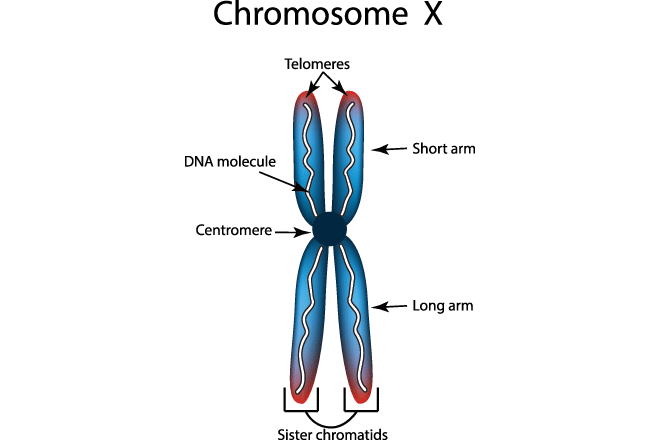
Each chromosome pair has a long arm labeled as “q” and a short arm labeled as “p.” The p arm and q arm intersect in the center region of the chromosome, called the centromere.
As mentioned earlier, cat eye syndrome results when chromosome 22 is affected. A healthy child will have two copies of chromosome 22, each copy with a short arm (22p) and a long arm (22q).
In children with CES, however, the short arm (22p) and a small portion of the long arm (22q) are present in four copies rather than two. What causes the extra copies to develop is still unknown.
Because the problem lies within the chromosomes and not the genes themselves, CES is not usually inherited (though inheritance is possible). It is instead speculated that a random abnormality in the way a parent’s reproductive cells divide may contribute to the chromosomal defect.
It’s recommended that parents of an affected child see a genetic counselor. Tests can be run to detect a chromosomal abnormality in either parent and determine whether CES is likely to occur in future children they may have.
SEE RELATED: Rare eye diseases: What causes them and how are they treated?
Symptoms
Symptoms of cat eye syndrome differ from person to person. It’s possible to show a few minor symptoms, or to experience varying degrees of all the symptoms listed below.
Cat eye syndrome can be observed through the following symptoms:
- Intellectual disability.
- Developmental delays.
- Absence or obstruction of the anus (anal atresia).
- Urinary tract problems.
- Iris coloboma.
- Widely spaced eyes (hypertelorism).
- Strabismus (misalignment of the eyes).
- Downward slant on the outer corners of the eyes.
- Abnormally shaped ears.
- Small growths of skin (tags) on the outer ear.
- Dips or depressions in the skin (pits) on the outer ear.
- Conductive hearing loss.
- Short stature.
- Cleft lip/palate.
- Congenital heart defects.
- Skeletal abnormalities.
READ NEXT: What Is Hypertelorism?
How cat eye syndrome is diagnosed
Doctors can potentially detect signs of CES during a prenatal ultrasound, a routine test done before a baby is born. In an ultrasound, sound waves are used to produce a picture of the baby, where certain characteristics of CES may be observed.
In order to confirm the doctor’s observation, a sample of the amniotic fluid may be taken and analyzed; this procedure is called amniocentesis.
Other testing used to diagnose cat eye syndrome include:
- Karyotyping — Genetic testing that produces images of one’s chromosomes. This allows doctors to confirm the presence of a defect in chromosome 22.
- Fluorescence in situ hybridization (FISH) — This technique is able to identify the specific DNA sequence on a chromosome.
Once the diagnosis is confirmed, more testing may be done to determine what symptoms your child has and their severity. These tests often include:
- Hearing tests.
- Eye exams.
- Electrocardiography (EKG), echocardiography or other tests to examine the heart.
- X-rays and ultrasounds to check the presence and function of different organs.
- Tests to measure cognitive function.
SEE RELATED: Aniridia: Causes and treatments
Treatment
There is no cure for cat eye syndrome, as it is a permanent defect in the chromosome. Treatment relies solely on which symptoms your child exhibits and may include:
- Surgery to correct cleft lip/palate, skeletal abnormalities, anal atresia and other physical and internal issues.
- Physical, occupational and speech therapy to develop speaking ability and motor skills.
- Growth hormones to help with short stature.
- Prosthetic contact lenses to protect the eyes and hide the iris coloboma.
- Special education for children with intellectual disabilities.
Importance of eye exams
It’s important for people with cat eye syndrome to have regular eye exams, especially if one of their symptoms is iris coloboma. That’s because refractive errors are common in people with iris coloboma, resulting in poor or blurry vision.
An eye exam can determine whether corrective lenses are required to restore clear vision. Prescription sunglasses may also be prescribed to help with light sensitivity (photophobia), which is commonly experienced by people with iris coloboma.
Additionally, eye exams allow an eye doctor to examine the inside of the eye and make sure everything is healthy and functioning properly, which may help prevent future problems.
READ NEXT: Canthoplasty (cat-eye surgery)
